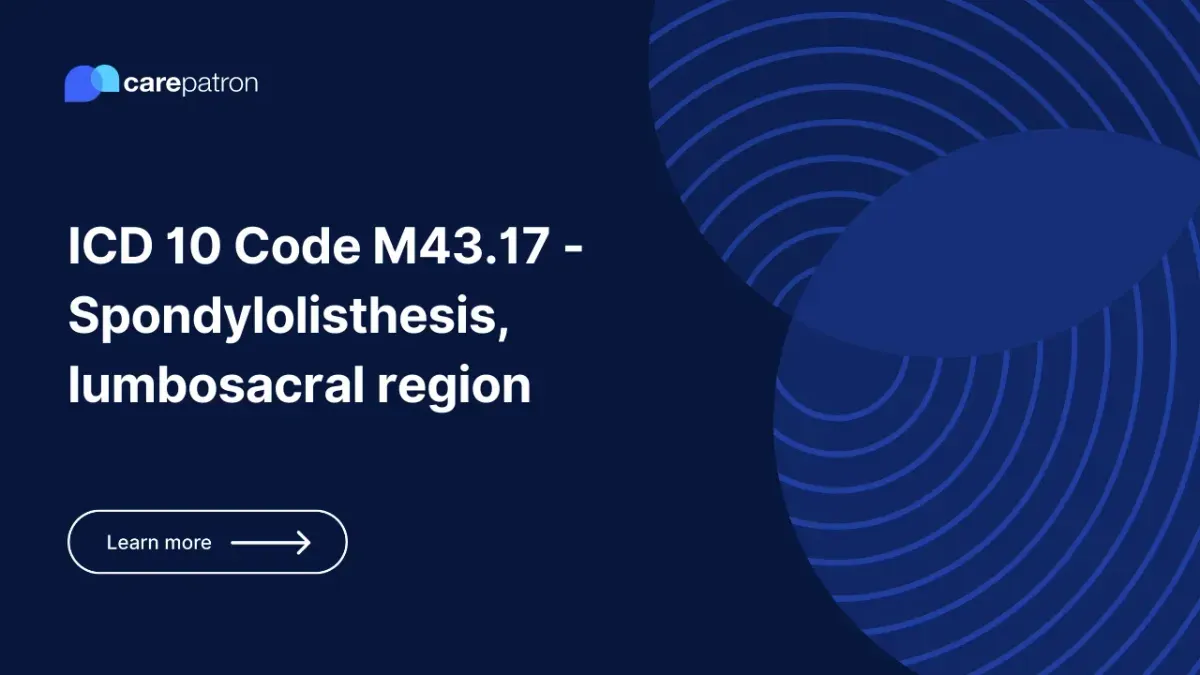
M43.17 – Spondylolisthesis, lumbosacral region
Learn about the ICD 10 code M43.17 spondylolisthesis: forward vertebra displacement in the lumbosacral region through this guide.
Use Code
Commonly asked questions
While it may not always be preventable, maintaining a healthy lifestyle, practicing good posture, and engaging in regular exercise to strengthen the back and core muscles can help reduce the risk of developing spondylolisthesis.
Spondylolisthesis treatment options include conservative measures such as physical therapy, pain management, and activity modification. Surgical intervention may be considered in more severe cases or when conservative treatments fail.
Spondylolisthesis is relatively common, particularly in the lumbosacral region. It can occur in individuals of all ages, but it is more prevalent among adolescents involved in sports activities and older adults with degenerative changes in the spine.
EHR and practice management software
Get started for free
*No credit card required
Free
$0/usd
Unlimited clients
Telehealth
1GB of storage
Client portal text
Automated billing and online payments
